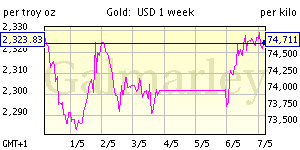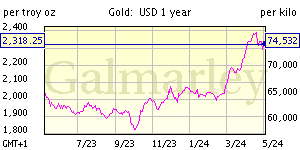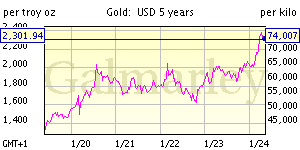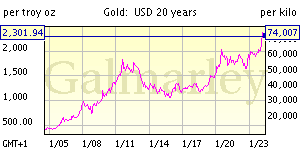Three Irreversible Trends
Since gold appears to be rising because of currency debasement (a term derived from the Roman Empire's practice of hollowing out gold coins and filling them with base metals), we need to consider whether governments will continue to spend and whether inflation will continue to rise. Three irreversible trends indicate that this pattern will persist for years to come. They are the aging population, outsourcing and peak oil.
The world's population is getting older, and most countries offer government-funded social programs designed to help retirees enjoy their golden years. However, an aging population means rising health care costs along with declining tax revenues. This is an unsustainable situation. In Europe, there has been rioting in the streets, as people protest retirement age hikes and cuts to benefits and services.
North American companies now outsource whatever they can with no regard for employees or communities; only the bottom line matters. It is far cheaper to hire someone in China-at 80 cents per hour with no benefits-than it is to hire someone in America-at $20 per hour, plus benefits. Without government protectionism, shareholder pressure ensures that this trend is irreversible. Without jobs, people cannot pay taxes or buy goods.
Finally, we have the serious issue of peak oil, which threatens to destroy the global economy, heavily dependent on cheap fossil fuel. Peak discovery has already occurred and we are fast approaching peak production of reasonably priced oil. Switching over to more expensive oil or to alternative fuels will have a negative impact on global GDP. This irreversible trend will fuel inflation for years to come.
The Consequences
These macro trends will result in:
lower GDP
systemic unemployment
lower tax revenues
increased money supply
more government debt
rising inflation
declining currency value
and higher gold prices.
Increased government debt and money printing to service the interest on this debt are direct consequences of these three trends. Since 1971, U.S. debt has soared to $13.96 trillion from $776 billion. Boston University economist Laurence Kotlikoff disagrees with that number; he believes true U.S. debt is $200 trillion, or a staggering 840% of GDP.
As investors lose confidence in currencies, the world's appetite for the relatively small amount of available gold will increase. There is an estimated $200 trillion in financial assets worldwide, not including real estate and derivatives. When demand for gold as a safe haven increases, there will be a transition from the $200 trillion financial assets market, to the $3 trillion gold market-much of which is owned by central banks and the world's wealthiest families, and not for sale at any price.
Future: Too Much Money Chasing Too Little Gold
The Chinese government is encouraging its citizens to invest 5% of their savings in bullion. Central banks in China, India and Russia are scrambling to increase reserves. Investment funds and banking institutions globally are turning to gold for insurance. Meanwhile, gold discoveries are down and production costs are rising. Clearly, competition for available gold will become fierce.
Where will the price of gold go?
In 2011, if gold repeats its average five-year increase of 19%, it will climb to $1,785 per ounce. If gold repeats 2010's projected performance in 2011, it could reach $2,010 per ounce. If the U.S. Federal Reserve unleashes more QE, gold's price will be much higher.
Today, gold is telling us that it can protect our wealth as it has successfully done for thousands of years. In such uncertain times, it is comforting to know that bullion ownership allows for sovereignty over personal economic destiny, and can change the way we view and experience economic reality.
![[Most Recent Quotes from www.kitco.com]](http://www.kitconet.com/images/quotes_7a.gif)






